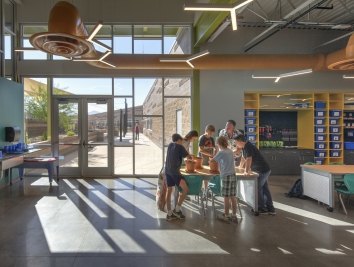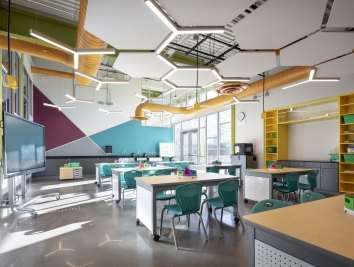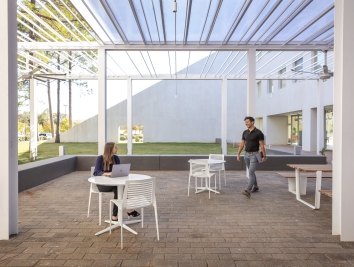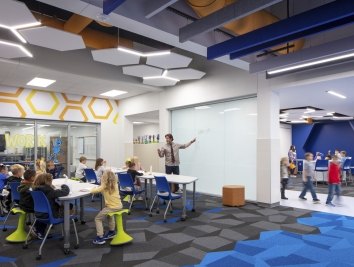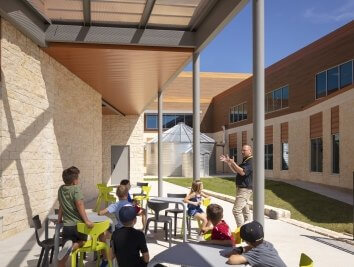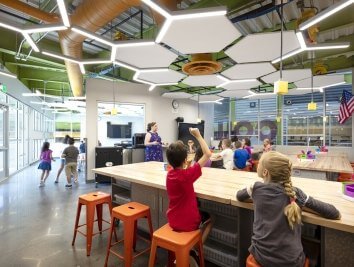Re-tuning the Classroom
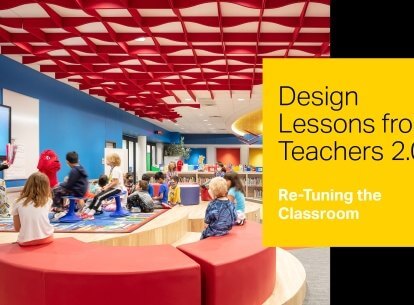
Silver lining of remote learning: we all learned a lot about ourselves. In the process of exposing the faults of virtual learning—inequitable access and singular solutions that failed to provide monitoring and adaptability, many students fell through the cracks. They fell behind, lost interest, and many became depressed and anxious. Still, the moment of pause calling attention to those things students lacked also called to attention the possibility of something new.
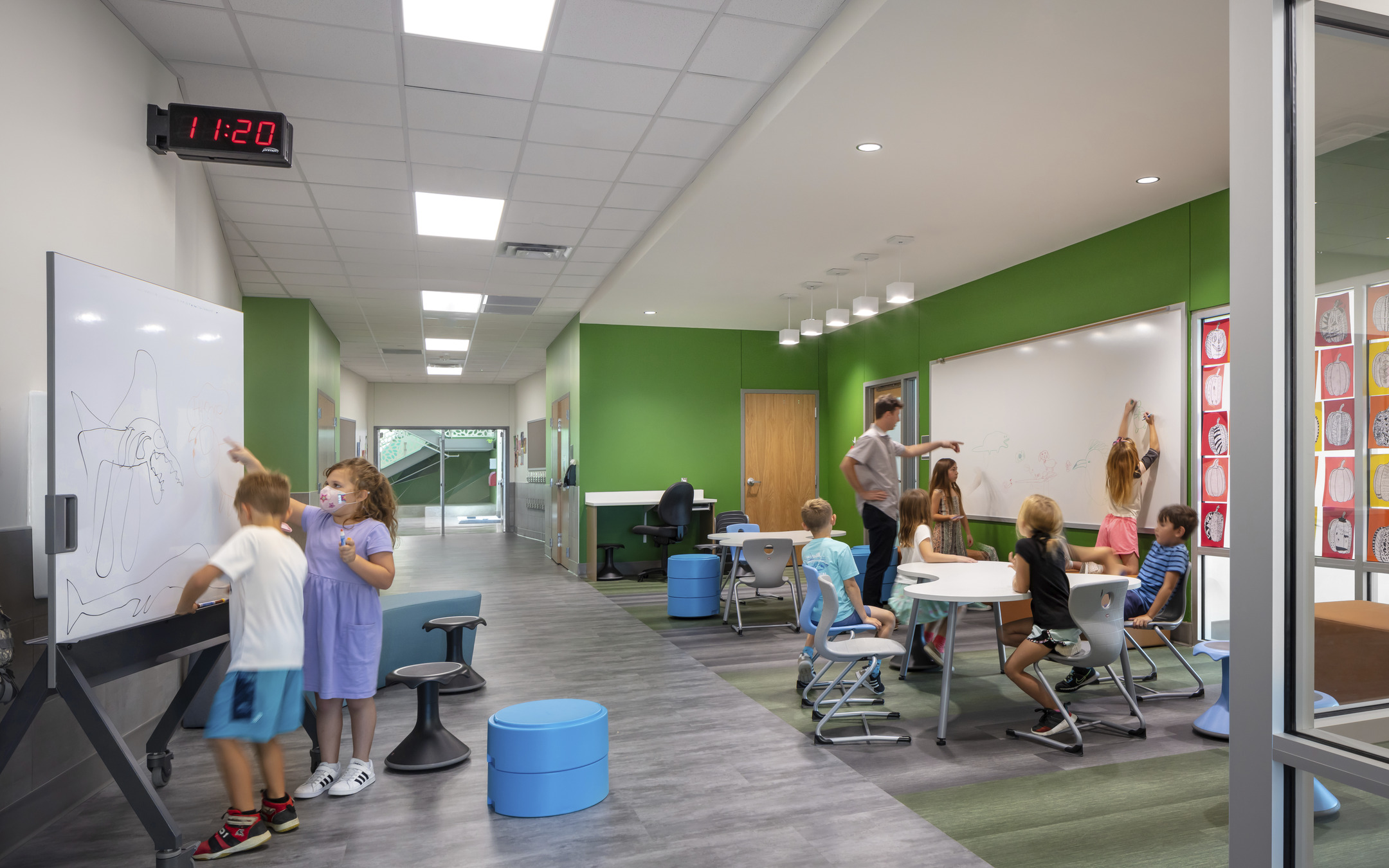
In the wake of testing hybrid and remote models, we’ve seen a reinvigorated demand for a return to school that’s more than in-person, it’s personal. Though challenged in many ways, the home offered students the comfort of choice. Social studies on the dining table with enough surface area for projects and easy access to at-home labs, also known as the kitchen. Devouring The Bluest Eye in bed and for the first time enjoying the wonders of literature. Shooting hoops outside or playing with the family dog, they found a rhythm to the day that fluctuated with them. These familiar stomping grounds permitted students and parents to customize the learning environment, observe differences among siblings and subjects, and refocus on not only how we learn but what it feels like.
The past two years accelerated the prioritization of personalized learning that responds to the several and sometimes competing needs, strengths, challenges, and preferences of students. If a student excels or struggles in a certain subject, is visibly distraught because of a known household issue, or if a student prefers minimal distractions over group learning, the school experience is expected to meet them where they are.
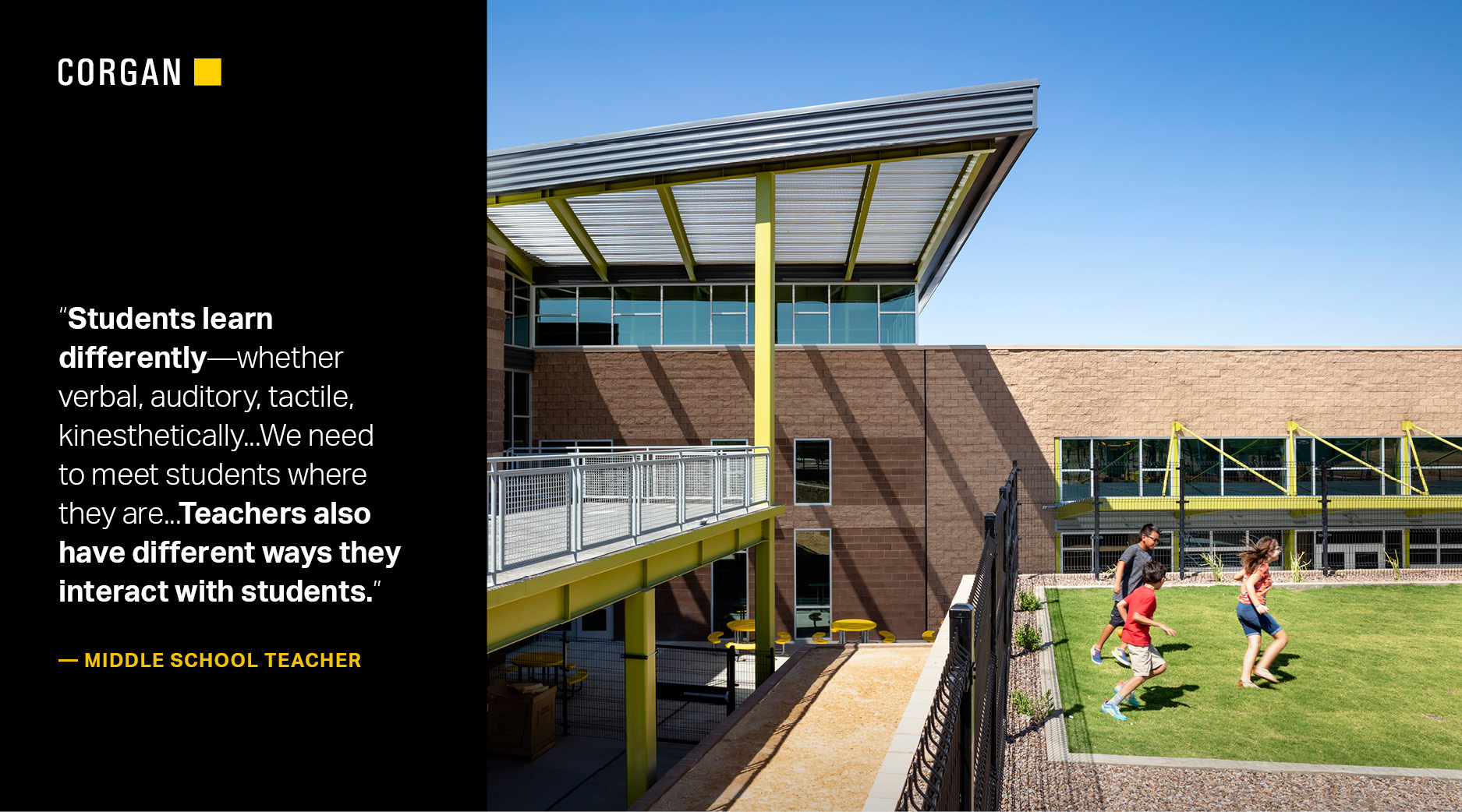
We now expect school campuses, philosophies, and curriculums to intuitively and uniquely connect us with what we are learning and who we are learning it with. It is fundamental to the quality of teaching and learning, to teacher and student sentiment and satisfaction, and to removing distractions and frustrations so that we are freed up to focus on what matters most. It can also be a source of stress for teachers, who are ultimately responsible for shouldering the responsibility with little room for personalization of their own according to Corgan’s recent survey, Design Lessons from Teachers 2.0, which surveyed 1,000 K-12 teachers across the nation on what they want from school design and how it has changed since the initial 2019 study. For nearly 40% of teachers, providing students a personalized and emotionally supportive environment is a main source of stress.
The Case for Personalization
In schools, design has celebrated the options available for students to self-select their natural preferences or for teachers to adapt the environment for students. Playful stools for a kinesthetic learner to wobble on or sensory supplies for more tactile learners individualize their experience. Students learn differently—and each subject or day could add a new dimension to the considerations a student may need in a day. As a response to the direct benefit on student outcomes, recent trends have continued to advocate for environments and curriculums that can be personalized for individual student progress and needs.
The benefit of personalization and choice, however, isn’t exclusive to students. Employees, or in this case, teachers, need it, too. It’s why many employers have opted to provide staff sit-to-stand desks, a variety of room sizes, a robust selection of tech tools, retractable doors to let in a breeze, and a mix of furniture options that include everything from ergonomic dials to lounge seating. However, for teachers, the options are usually more limited.
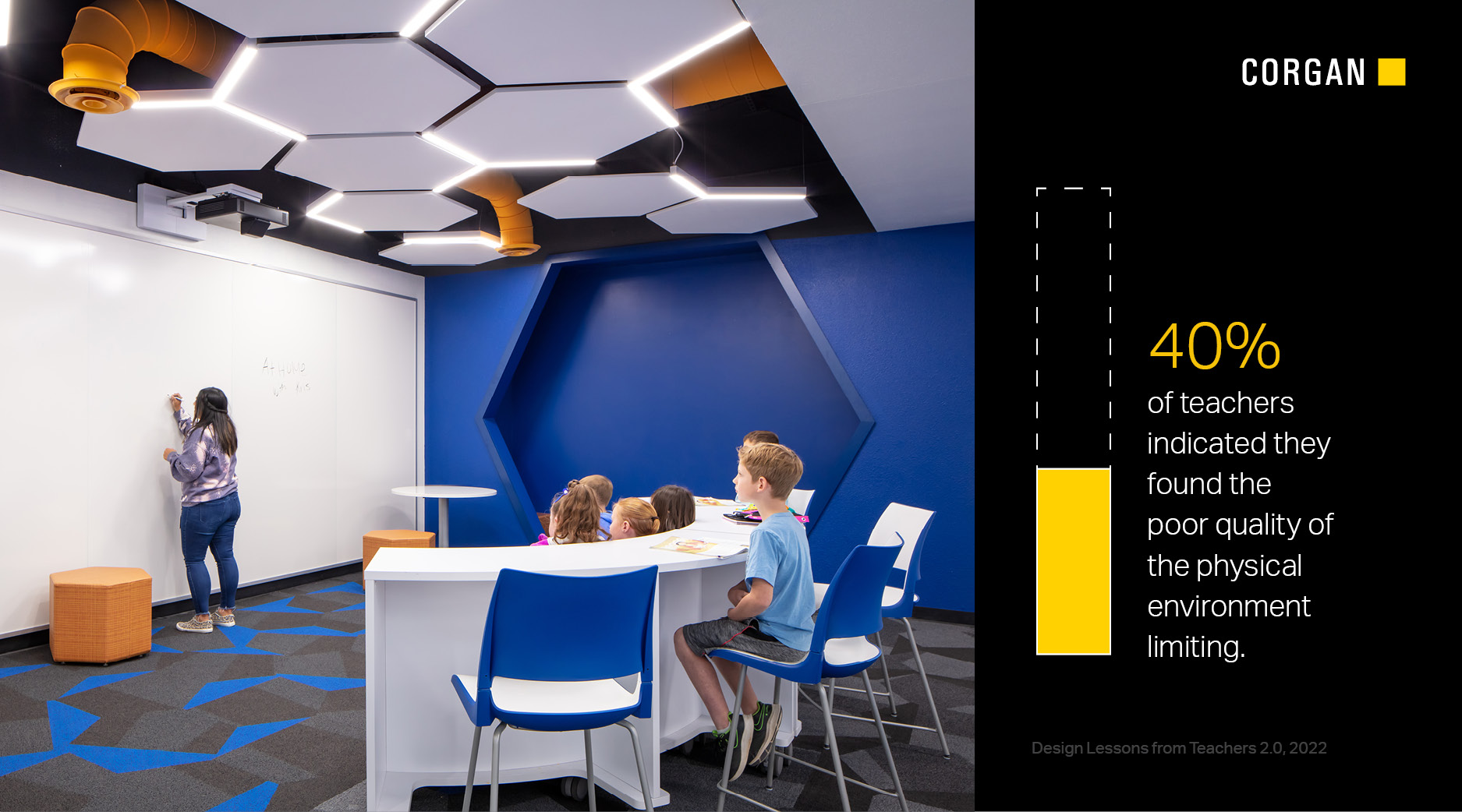
While the student experience remains the primary priority of educational spaces, schools have an opportunity to optimize teacher performance and, consequentially, student outcomes by offering teachers similar agency in tuning their surroundings for different abilities, teaching and learning styles, and emotional needs. From adjustable desk heights to dimmable lights, these design interventions are about more than personal comfort; rather, they signal the value and expertise of teachers, activate the space as a supportive partner in the education of its students, and serve as powerful tools to recruit and retain the top talent—providing a space where they and their students can be their best.
The Challenge of Personalization: It's Personal
Prefer the window office? Natural light and views to the outdoors of these privileged seats are often associated with positive outcomes such as higher productivity and wellness. But, during peak summer afternoons, the overheating and glare might be a turn-off. Centrally located collaboration spaces that put innovation on display are great until you need a place for a sensitive one-on-one conversation. Open a window and let in the fresh air—and the noise. You get the point. The reality is that there is seldom a singular setting or one-size-fits-all solution.
Rather, teachers need and expect a mix of thoughtful customizations that meet them where they are. It’s the ability to slide between quiet, distraction-free spaces when they or their students need focus and connective hubs that invigorate and feed their energy. It means the option to choose between more ergonomic workstations and more comfortable spaces for smaller conversations or to dial-up or down the light, noise, and stimulation according to their preferences.
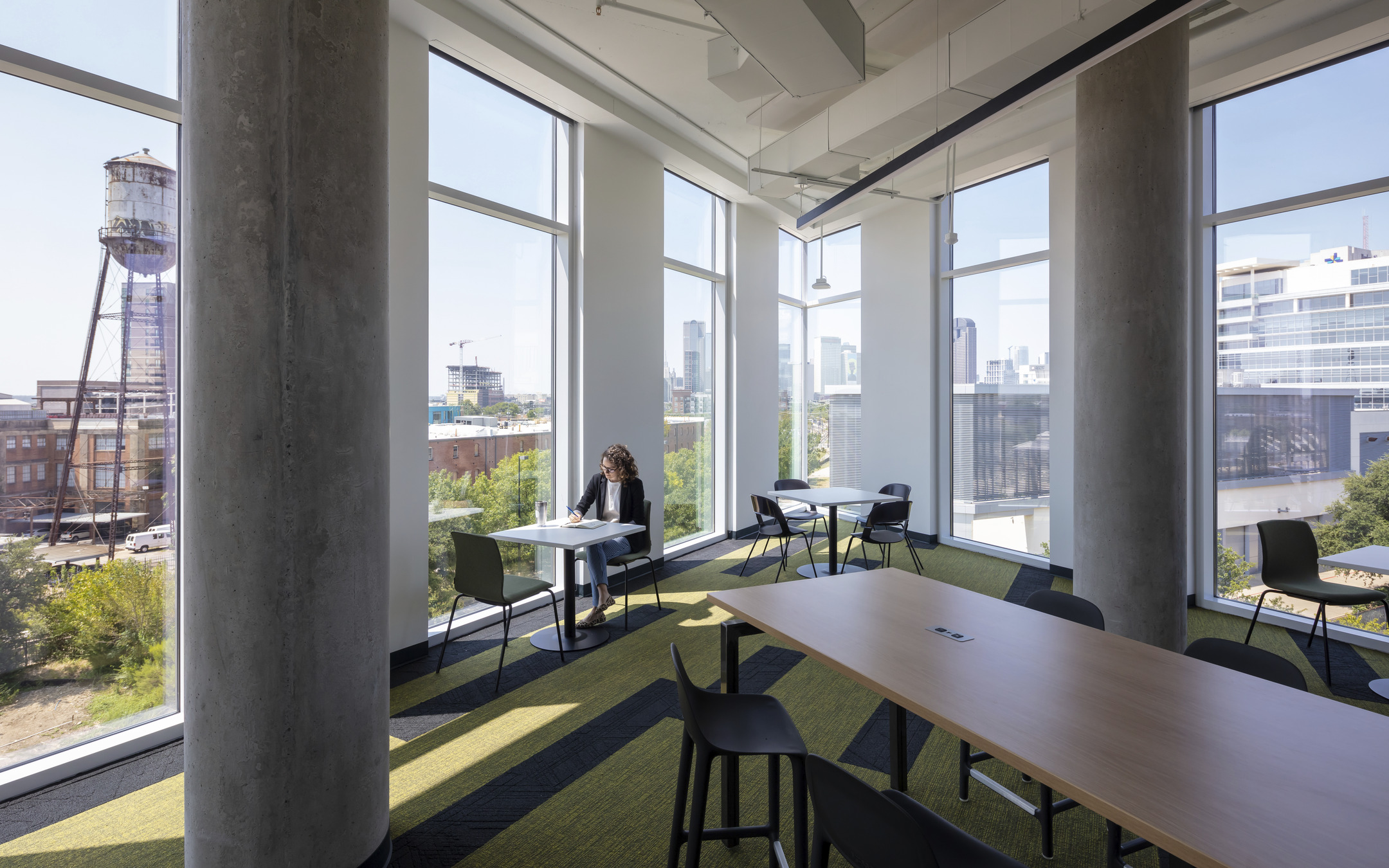
Teacher ownership, or their sense of alignment with their work and influence over the where, how, and what it feels like, can be complicated by regulations, cost, management, and building codes that limit personalization in the classroom.
However, design interventions that consider the classroom’s several influencing factors and permit even small adjustments are associated with several positive outcomes, including improved teacher satisfaction, accountability, creativity, motivation, and investment—which can add up to a significant improvement in how someone receives and performs in their space.
Design Solutions
Physical Comfort
The war over the thermostat’s most enduring battleground may be the school. Instead of overhauling campus-wide utilities and infrastructure, smaller, more cost-effective solutions, including dimmers, operable windows for natural ventilation, and even fans, can adjust light and temperature as needed. If students are feeling the heat, blinds help keep classrooms shaded and cooler—bonus points for the added focus it provides. Teachers disagree (2.86/5) that they currently have the ability to make choices to better regulate the environment for themselves and their students. For 40% of surveyed teachers that currently find the poor quality of the physical environment to be limiting, choice may be able to improve environmental quality.
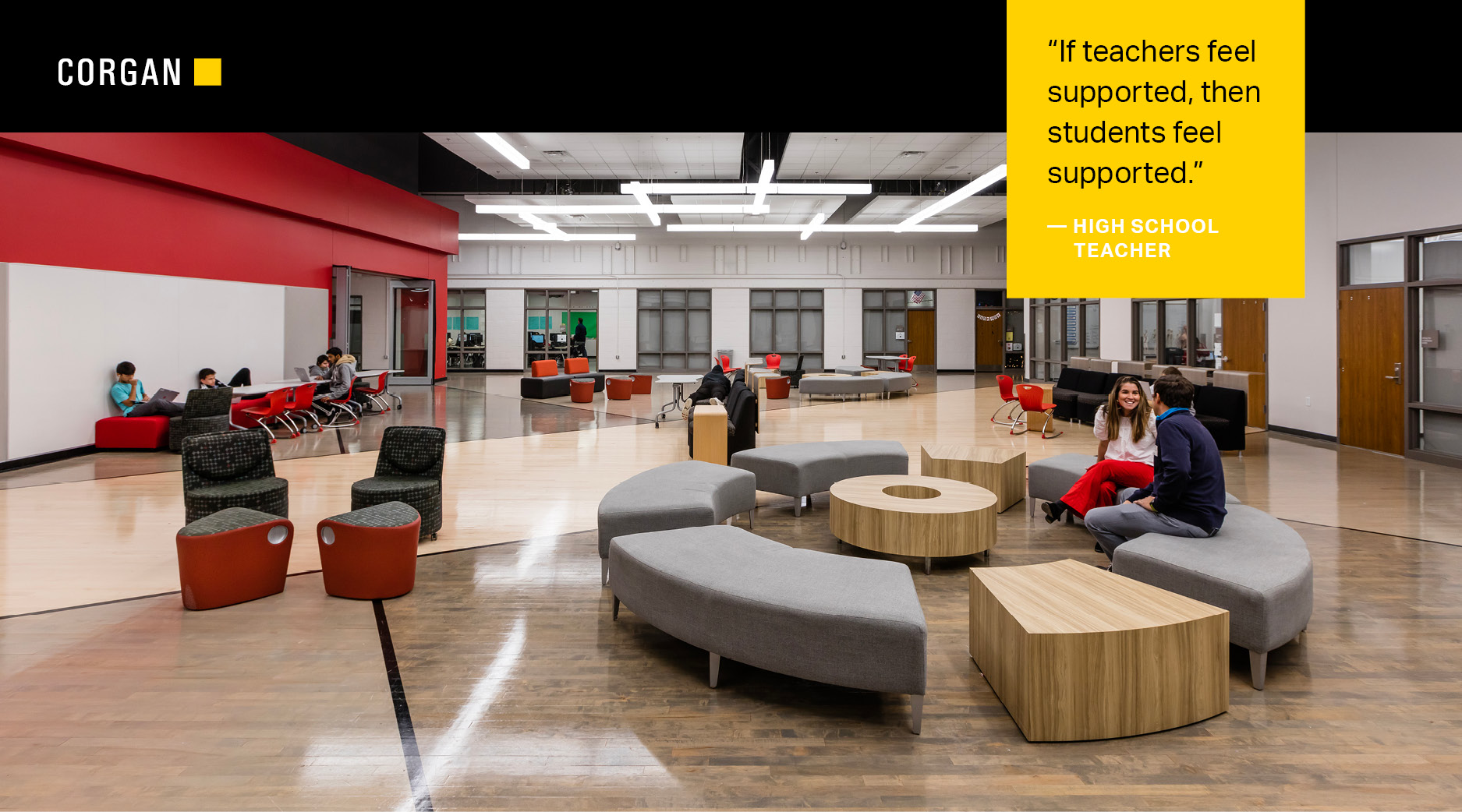
We’ve embraced smart homes—characterized for their intelligent and intuitive fluidity. Interpreted for the classroom, this opens the possibility of chairs and desks that are not only ergonomic and adjustable but also equipped with multimedia technology and controls for the classroom. Automated presets mean a classroom may provide alerts for poor air quality or allow for teachers to adjust the temperature, lighting, angles of screens, sound, and desks at the press of a button. As we move toward a more human-centered classroom, it removes barriers that typically discourage the use of these controls.
Elsewhere, restorative, tunable environments provide a reprieve from stimulation, privacy for mental and emotional health needs, and articulate the value of teacher and student wellness. For instance, pilot programs that repurpose underutilized spaces into peaceful meditation rooms or gardens have demonstrated the transformative benefits of conservative interventions such as hanging plants, large-scale artwork, sound and aromatherapy, and the addition of therapeutic furniture. Residentially inspired window treatments, seating, and lighting add the comforts of other familiar spaces that encourage a sense of ease, safety, and comfort.
Minimizing Distractions
Campuses are loud. The class bell, lockers slamming shut, noisy hallways, and recess add up to noise pollution that is difficult to manage—and is almost always poorly timed. Whether teachers are seeking heads-down time for focused work or struggling to minimize distractions for an important class exam, mechanisms that empower teachers to dial down the disturbances are vital.
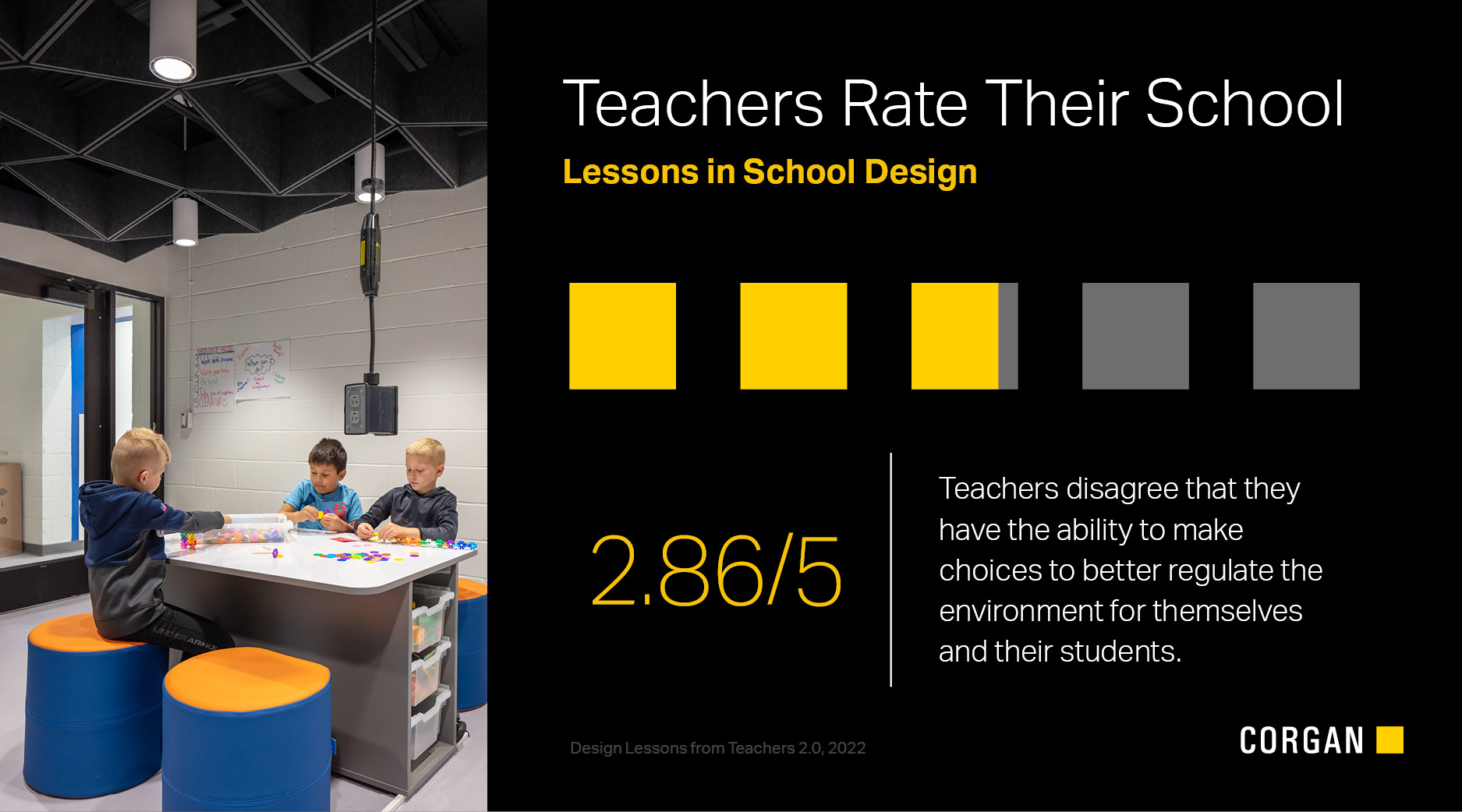
A comprehensive approach that incorporates new sound absorption products into the décor and functional elements such as pinboards as well as sound barriers that minimize sound leaking in help to mitigate auditory interruptions. Visual noise can be just as disruptive. The busyness outside a window, construction, students involved in a different and more enjoyable activity, or even clutter can draw your attention and interrupt the flow. For the 77% of teachers who reported completed non-teaching tasks at their classroom desk, it means competing against the classroom’s bright colors, patterns, animations, and themed bulletin boards to hold their attention for grading and lesson planning. These student-centric spaces are designed with visual complexity and theme that is intended to stimulate particular student behaviors and are typically less suited for professional needs.
While teacher lounges and workstations can carve out spaces that are distinctly for educators, they present their own challenges—serving double-duty as spaces for collaboration between colleagues, its own share of visual clutter, and the common pain points associated with shared spaces.
Adding individual focus pods that cocoon a small workstation or punctuating the campus with a mix of micro-spaces that function as phone rooms or offer a mental, visual, and auditory reprieve from the surrounding space serves as spokes to a teacher hub. Complemented by small meeting rooms, collaboration incubators, outdoor areas, and breakout spaces, zones dedicated to “heads down” time allows teachers and students to select the appropriate environment depending on their individual preferences.
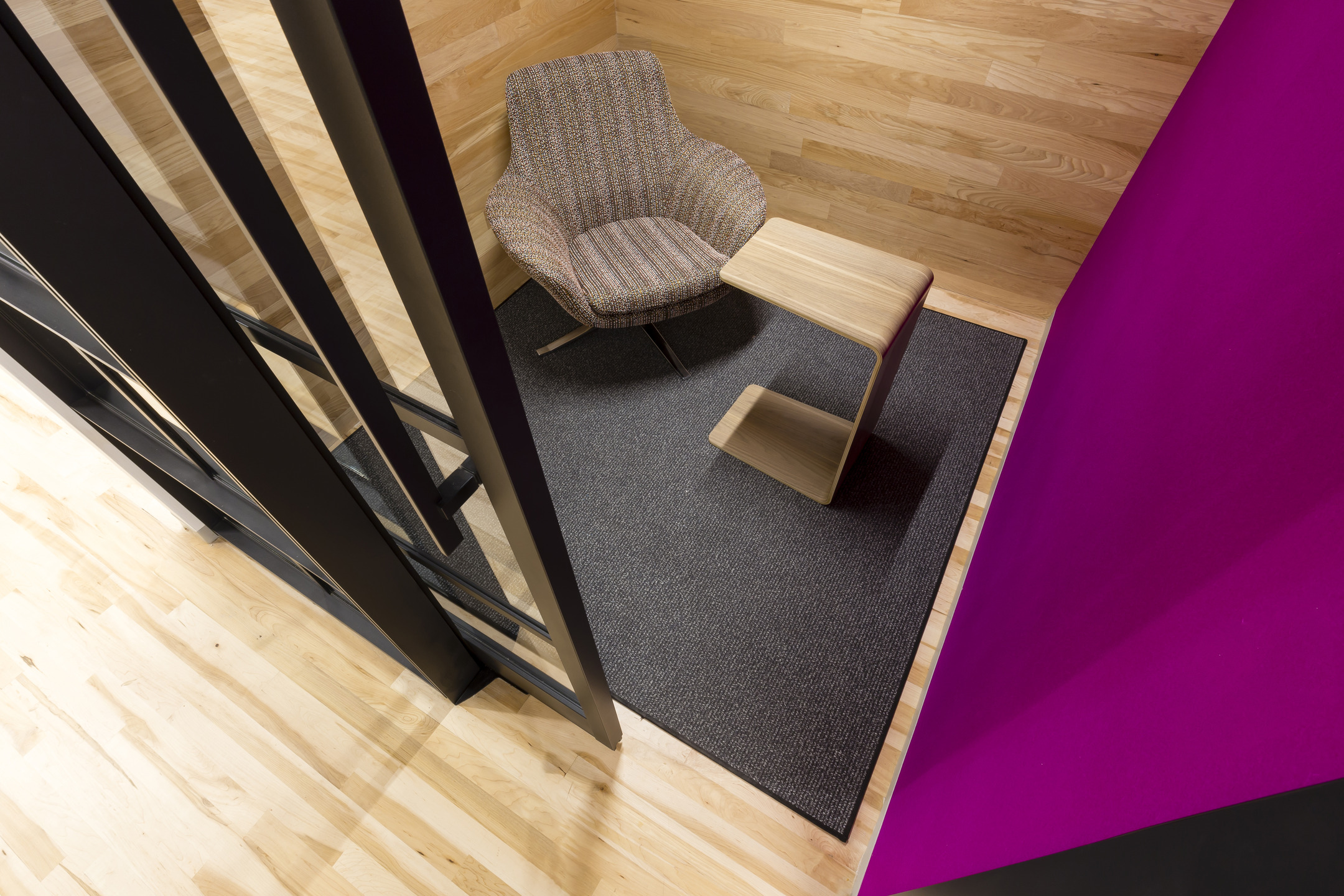
Ownership
Teachers often have little control or ownership over their day’s schedule or space. Yet, when a dedicated teacher workroom is available, only 15% of teachers indicated using it for their non-teaching tasks. That’s because it is fraught with a trail of frustrations that come from shared spaces, including misplaced supplies, abandoned clutter, occupied outlets, and not enough surface area—making the home an attractive workplace for many. Need to make a quick call to the doctor or take a moment to regroup after a difficult conversation? When not turning to their classroom, teachers indicated they end up in the restroom or car to address personal needs.
What’s left of a teacher’s ownership over the environment may be small when factoring standard classroom orientation, technology, regulations, codes, and student behaviors, which most strongly influence their ability to customize their space but providing a space that is their own can reinvest trust and agency while adding much-needed predictability and control.
The classroom is an ecosystem that requires balancing teacher and student needs. Standardized classes with dedicated bulletin boards or zones where teachers can take ownership, for instance, encourage a sense of pride, inspire creativity, and promotes accountability. These small moments not only recognize the cultural importance of these platforms but also allow for autonomy and freedom within the guardrails education design requires. Offering opportunities to personalize décor, influence over design finishes, dedicated storage space, or choices of preferred furniture or rugs, fixed or flexible whiteboards, and lighting options, gives back some control over their day and environment.
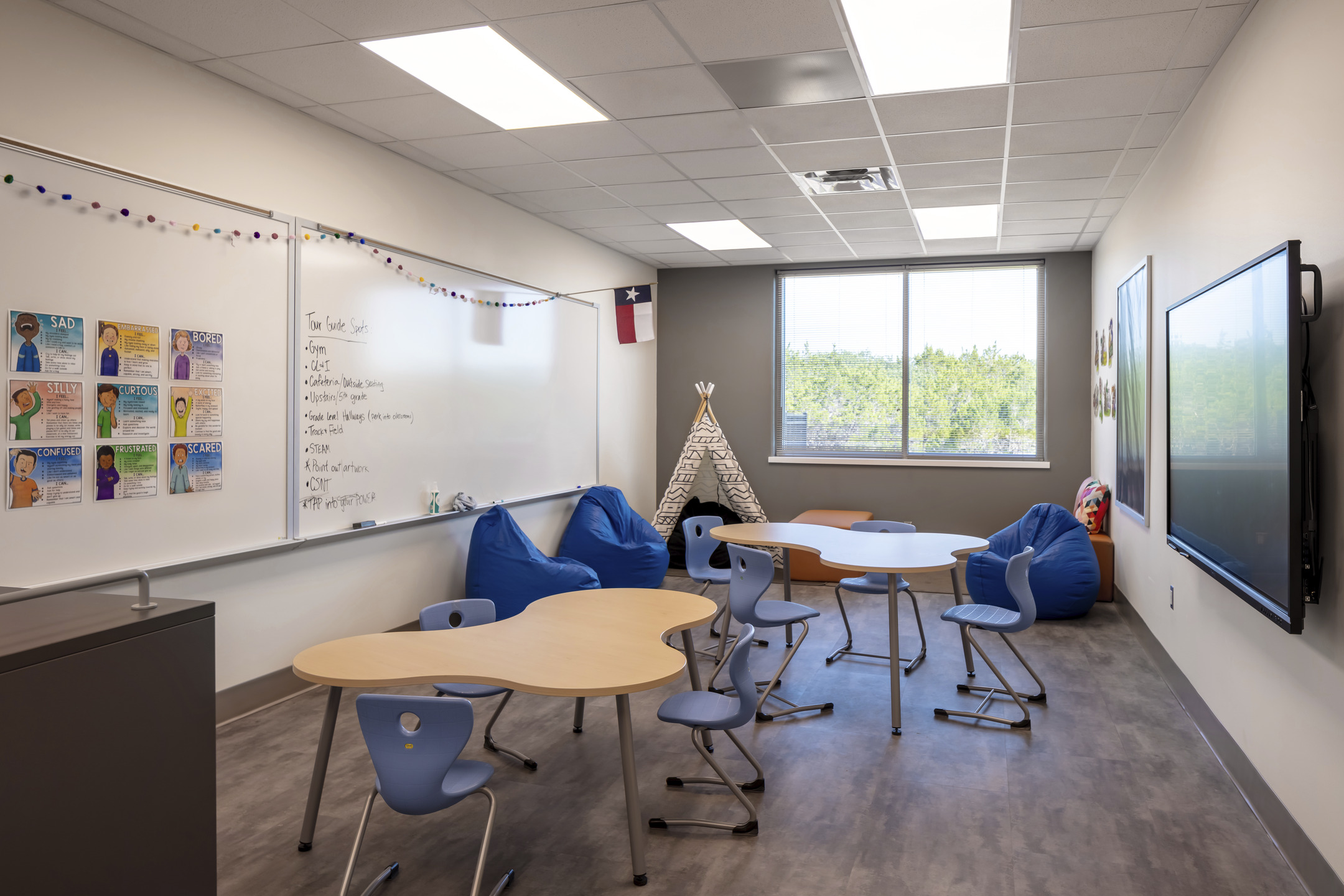
Customizable Technology
Our experience of spaces is informed by more than how the physical environment makes us feel. It also includes what that space permits us to do and how easy it is to do those things—how it facilitates our connection to our work, others, and to new ideas. The proliferation of technology, though, means these things seldom happen strictly on one platform.
Just as teachers need dials to personalize their physical environment, embedded technology requires similar considerations and clear communications that make customization and choice possible. For example, guidelines around how to use embedded technology and emerging channels of communication promote confidence to intuitively self-select how and when they manage these touchpoints. In addition to providing teachers the technology they need, affording physical alternatives empowers teachers and students to choose the most appropriate modality. Intentional access to nature, sunlight, sensorial experiences, and mobility balances the emphasis on technology while more thoughtfully integrating it into the physical platform helps enhance and not overtake the overall experience.
Looking Forward
Schools don’t exist without teachers. In honoring their work and their role as educators, designing interventions that give back agency and control not only activate them to do their job but also demonstrates care for the school’s greatest asset: its teachers and students.
In early 2022, three years and one pandemic after Corgan’s original teacher survey, we wanted to understand how teacher perspectives, needs, and pain points regarding school design have changed over time. Using design research methodologies, Hugo, Corgan’s research team, conducted 36 in-depth interviews and deployed a survey to 1,000 K-12 teachers in the United States. The survey allowed for both longitudinal comparison to the original 2019 study as well as offering new insights into the school as a workplace that is designed to better support teachers.





